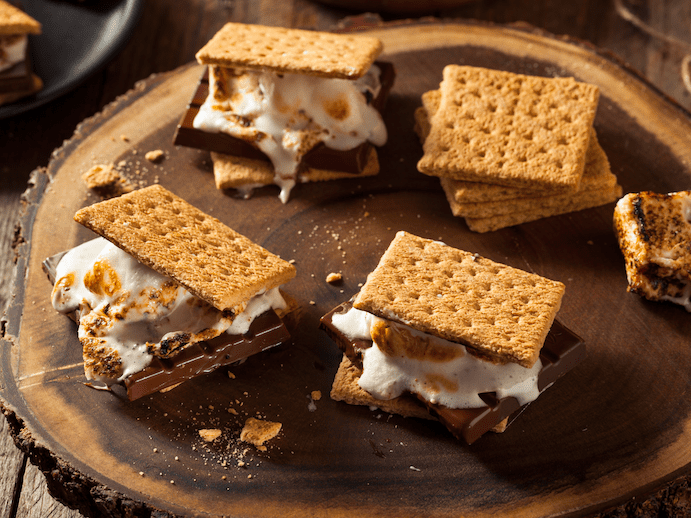The first known s’mores recipe was published in the Girl Scouts handbook Tramping and Trailing With the Girl Scouts in 1927. The snack was originally called “some mores.” While sweetness is one of sugar’s roles in this summer treat, there are a lot of other interactions happening too.
You probably know the three essential elements of a classic s’more: graham cracker, chocolate and a marshmallow. Sugar is an important ingredient in each of these. In the cracker, the sugar contributes to the texture as well as the taste. The sugar absorbs the moisture from other ingredients while it bakes, giving it the crisp crack that you expect. While the sugar in the chocolate cuts the bitterness and acidity of the cocoa and makes it sweet, it also contributes to the smooth texture. For the marshmallows, the spongy texture comes from the air bubbles that are trapped when the sugar syrup and gelatin are beat together.
The chemical reactions can actually be seen by the eye when you make s’mores around the fire. The golden-brown color can come from two different reactions: caramelization and the Maillard reaction. When the sugar gets hot enough, it starts to break down into smaller molecules that then react with one another. This is called caramelization. These reactions produce new nutty and buttery flavors you can taste and smell on your toasted marshmallow and give the outside of the marshmallow the satisfying golden color. Certain sugars may also interact with the amino acids in the gelatin of the marshmallow, contributing to the color and flavor of the roasted marshmallow. This is called the Maillard reaction and happens at lower temperatures than caramelization does.





Get Social with #MoreToSugar